Are you looking for top places to visit in Kenya? Arrow Adventures Kenya offers you exceptional adventure experiences, whether you want to explore the wilderness in search of wildlife, climb mountains or relax on the beach. Kenya has diversity which includes enchanting landscapes with sweeping plains providing refuge for particularly abundant and varied wild animals that roam freely. There are also majestic snow-capped mountains such as Mount Kenya (5199m), as well as tropical palm-fringed beaches along the Indian Ocean coast. The country is bisected by the Great Rift Valley from north to south.
Below are some of the top places to visit in Kenya:
Diani Beach

With many world class beach resorts, widespread palm vegetation, giant coral reefs and a vibrant marine life put Diani Beach in its own class and as one of Top places to Visit in Kenya. Diani Beach has been voted Africa’s leading beach destination for the third time running since 2015.
The sandy beaches are wide, white and they stretch out as long as you can see. Beautiful coral reefs protect the beaches from heavy waves and offer fantastic snorkeling opportunities. You can also enjoy some great diving and plain old regular swimming here. It’s also renowned for kitesurfing and deep-sea fishing. Diani also offers the best coastal nightlife on the region.
You can spice your diani beach stay by combining your unforgettable beach vacation with a safari adventure to the nearby Shimba Hills National Reserve only a little over an hour’s drive away.
Lamu Island
Founded in the 13th century, Lamu island has been continuously inhabited for over seven hundred years. It is proud to be one of the oldest and best-preserved remaining Swahili-tradition settlements in East Africa. It is a city and port just off the Kenyan shore some 250 kilometres north of Mombasa. It is also easily accessible by just a 40 minutes flight from Mombasa to the adjacent island of Manda
Lamu Island is part of the Lamu Archipelago and boasts of a small population of about 25,000 people. Lamu Old Town represents the Swahili culture at its truest and finest. The Island’s rich history and cultural influences are evident through its architecture and traditions with a unique blend of Swahili, Arabian, Indian and European elements. Walking the narrow streets among friendly and kind locals, visibly proud of their traditions, feels somehow surreal, like being a part of an exhibition – but amazingly fulfilling!
The crescent-like southern shore of Lamu island’s windward side is a long, long sandy dune. With no barrier reef to hold the waves, this is one of the few beaches in Kenya, where you can expect wind conditions to surf properly.
Watamu Beach
Watamu is a small town located approximately 105 km north of Mombasa and about 15 km south of Malindi on the Indian Ocean coast of Kenya. The beach is one of the top places to visit in Kenya and is known for its local reefs and is perfect for swimming, offering you a fantastic holiday experience. You can engage in some beach activities such as surfing, sunbathing or take a long walk along the shores. The three bays, Watamu, Blue Lagoon, and Turtle with white sand, constantly kissing the turquoise ocean in a light breeze that just sways the tops of palm trees, are not only breathtaking but also full of interesting activities.
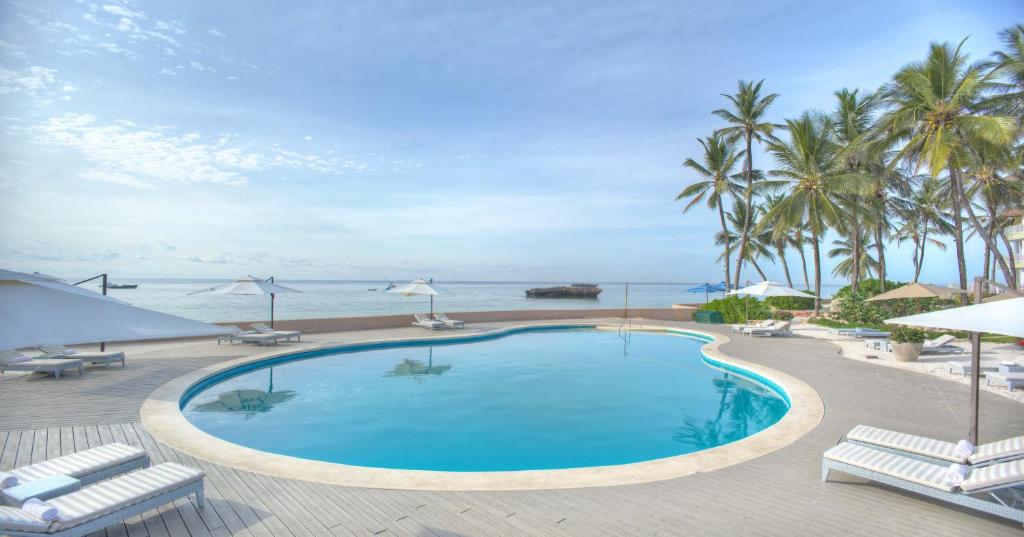
Stunning coral reefs stretch out just off the coast, part of the Watamu National Marine Park Protected Area. Here are some of the most beautiful diving locations in the world, the desire of every avid observer of the underwater world. Something special are the mangrove forests and tidal wetlands on the mainland, where you will enjoy watching many different birds.
After a day full of adventures, you can visit one of the great restaurants in the evening or treat yourself to a glass of your favourite drink while watching the sunset on the beach.
Mount Kenya

Mount Kenya, located in Central Kenya, is Africa’s second highest mountain after Mount Kilimanjaro inTanzania, with striking and eroded snow-capped peaks, which can be admired from miles away. The mountain is a circular, large symmetrical volcano cone whose diameter at the base is about 12 km. Mount Kenya has three peaks; Batian -5,199m, Nelion – 5,188m and Point Lenana – 4,985m. The mountain has other little-known peaks such as Point Piggot -4957m, Point Dutton – 4885m and Point John – 4885m, that are ideal for beginners. The magnificent views over the surrounding region from point Lenana and other high points around the main peaks makes it popular among the mountain climbing enthusiasts. The area over 3200m is protected under Mount Kenya National Park. The lower forest surrounding the mountain support a large variety of wildlife such as elephant, buffalo, monkey, antelope, lion, zebra, eland, rock hyrax, giant forest hogs, leopard and various species of birds such as eagle, vulture, and sunbird among others. You can also explore the best routes to Mount Kenya.
The third highest peak, Point Lenana, is a popular reachable destination for trekking groups. However, Batian and Nelion peaks are difficult and may require more experienced and better equipped mountaineers to scale. The trek through Mount Kenya national park is a beautiful expeditions adorned with views of numerous tarns and exotic vegetation such as lobelias and groundsels. The trekking requires good preparation, both mentally and physically.
Masai Mara National Reserve
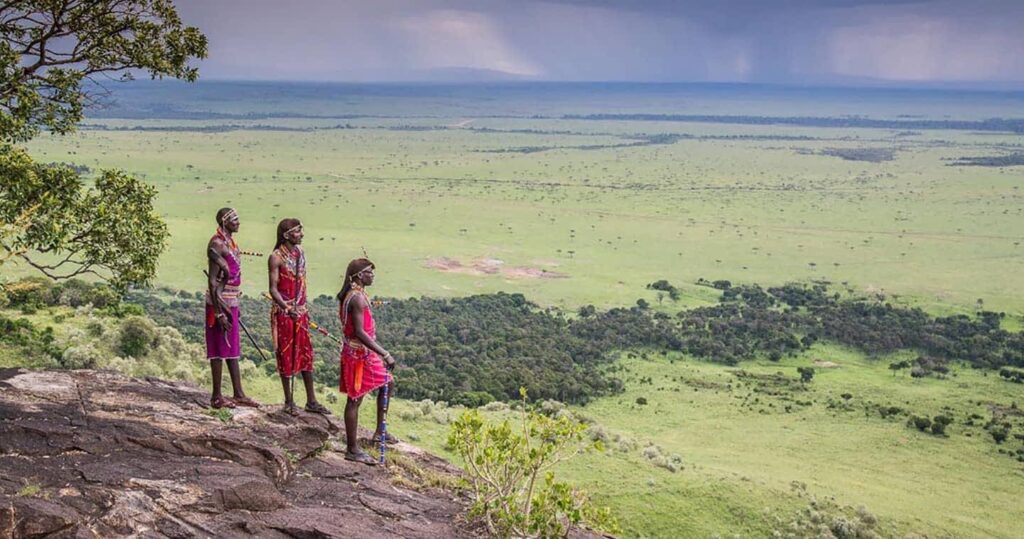
Masai Mara National Reserve is situated in the southern part of Kenya. Measuring approximately 1510sq. Kilometres in size, this unfenced savannah grassland is roughly 150 miles southeast of Nairobi. Maasai Mara derives its name from the indigenous people of Kenya – the Maasai People – meaning spotted.
The Masai Mara provides the best view of the famous wildebeest migration as the animals move from Serengeti to Masai Mara plains between July and September. The Mara is also home to the richest concentration of wildlife, including the “Big Five” (elephants, lions, leopards, rhinos, and buffalo), zebras, antelope, gnus, Oribis, hyenas, giraffes, warthogs, gazelles, hartebeests, hippos, crocodiles amongst others. The park has the largest concentration of African lions, including the black-maned lion. Birdlife is as plentiful as wildlife at the Masai Mara, boasting over 400 different birds species.

Masai Mara reserve experiences a hot and dry climate with a regular rainfall season twice a year. The reserve’s topography is mainly open savannah (grassland) with clusters of acacia trees along the south eastern area of the park. The Mara and Talek rivers grace the rolling plains of the reserve. Myriad seasonal rivers appear during the rainy season but dry out once the rains are gone.
Ol Pejeta Conservancy
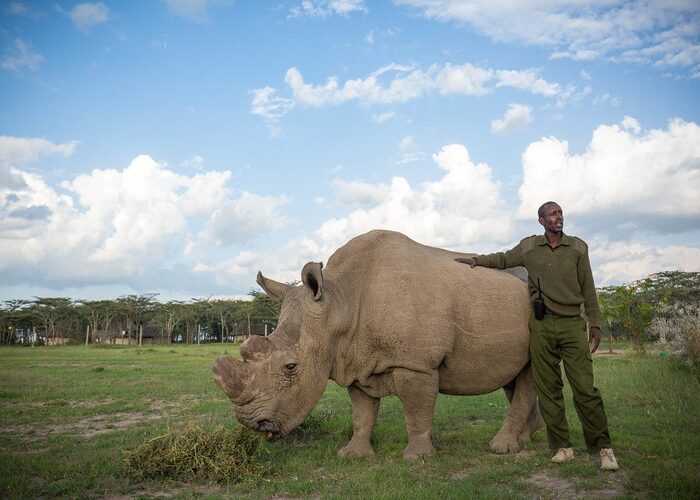
Ol pejeta Conservancy is 360 km² and is the largest black rhino sanctuary in East Africa, and hosts a high density of predators. It provides home to a wide variety of wildlife such as the big five, a great number of plains game such as zebras, both common and grevy’s, antelopes, gazelles. The Jackson’s hartebeests are endemic here. The conservancy provides safe haven for the Chimpanzees rescued from the black market and the last two remaining female northern white rhinos (Najin and Fatu) after the only male (Sudan) succumbed on 18th March 2018. The Conservancy strives to protect diverse habitats and generate revenue through tourism and then plough back the income through conservation and community projects. They manage a very successful livestock program and the development of community-based conservation tourism activities.
Taita Hills Wildlife Sanctuary
Taita Hills Wildlife Sanctuary is a privately-owned wildlife sanctuary located in Taita Taveta County approximately 220 kilometers from Mombasa. The sanctuary covers an area of 110 km2 and is adjacent to Tsavo West National Park and the Lumo Wildlife Sanctuary.
The Taita Hills lie to the south of Tsavo West and on the fertile land in the saddles between the main peaks the Taita tribe grow a variety of vegetables.
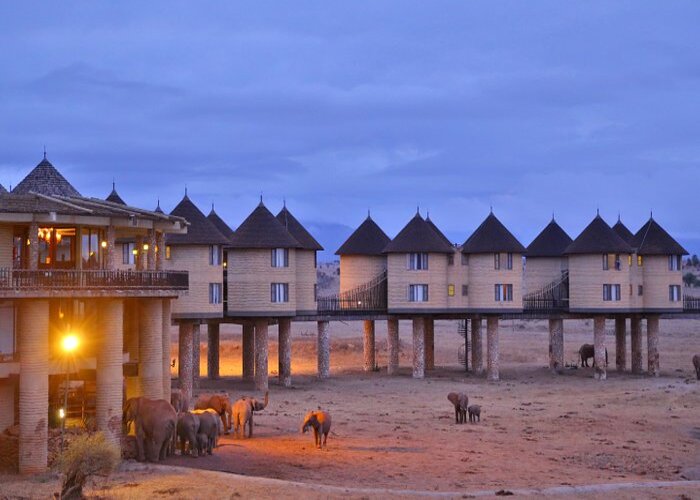
The plains below the hills of the Sanctuary are home to elephant, lion, oryx, lesser kudu and a wide variety of smaller animals. The variety of animals which live in this small 110 sq. km sanctuary are often easier to spot than those in the larger Tsavo Parks.
The Sanctuary is a success story in sustainable conservation where wildlife – including elephant, lion, buffalo and giraffe – thrive. This commitment to responsible ecotourism, which has been so well supported by visitors, ensures that the Taita Hills and all its flora and fauna will continue to prosper.
Check our 8 Days Kenya Scenic Adventure Safari
Tsavo East National Park

Tsavo East and Tsavo West National Parks together make up the biggest national park in Kenya at just under 22 000 km². In May 1948, a month after the park’s conception, Tsavo National Park was divided into east and west for administrative purposes. Named after the Tsavo River which flows from west to east, the park is considered one of the world’s biodiversity strongholds.
It is a vast park and guests will often have to be patient during game viewing activities, but the reward is great. The experienced safari guides are familiar with the game movements and season migration paths and times of Tsavo’s wildlife. Some of Tsavo East’s popular attractions are Mudanda Rock, Yatta Plateau and Lugard Falls.
The surface of this part of Tsavo is essentially flat and covered with low, dry vegetation. The reserve is popular for short safaris from the Kenya coast, such as Mombasa, which makes for a stunning East Africa beach and bush vacation.
Amboseli National Park
Amboseli was declared a national reserve in 1968. It became a national park in 1974. Amboseli National Park covers 392km² and has a mixed topography of plains, acacia woodland, rocky thorn bush, swamps and marshes.
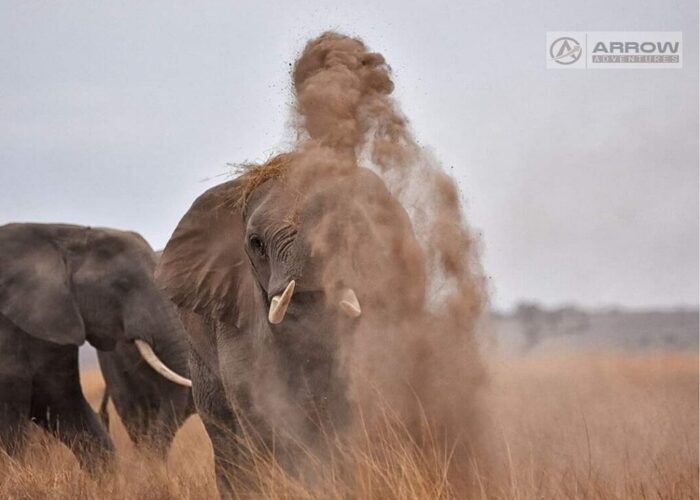
This diversity, along with a long dry season, ensures excellent viewing of the large concentrations of African animals living in this natural habitat. With its awesome view of Mount Kilimanjaro (Africa’s highest mountain at 5,895m), Amboseli National Park offers a unique and breathtaking backdrop for viewing Africa’s animals. It also has a dry Pleistocene lake basin that houses a temporary lake, Lake Amboseli, after the rains. Amboseli offers some of the best opportunities to see African animals because its vegetation is sparse due to the long dry months.
Amboseli National Park is home to wild animals, which include the African elephant, buffalo, impala, lion, cheetah, hyena, giraffes, zebra, wildebeest among other African animals. There is also a host of Kenya birds, both large and small, to see if you keep your eyes open and stop at every sighting.
Aberdare National Park
Aberdare National Park is a diverse broad collection of African ecosystems. In contrast to many national parks, the Park is covered by thick mountain rainforest and bamboo forests. Most of the park’s big game lives in these woodlands. The dense vegetation can sometimes make the sighting of animals a bit more difficult, but all the more exciting when an elephant or buffalo suddenly emerges from the thicket.
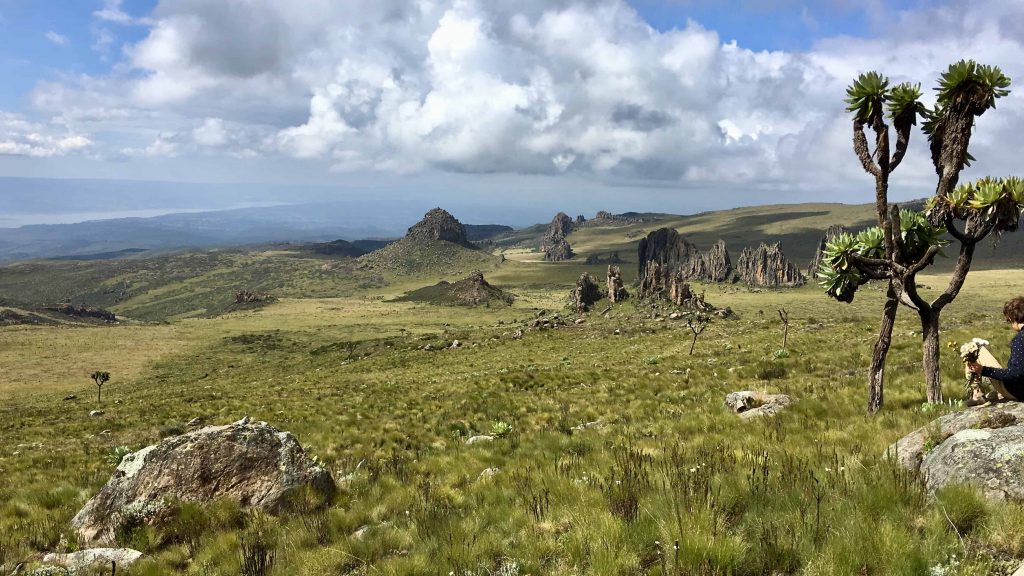
The Park is situated in the Central highlands of Kenya. It is found north of Nairobi and east of the Rift Valley and covers an area of 767 sq km.
Aberdare National Park is a high-altitude national park created to protect the slopes and moorland of the Aberdare Mountains. The topography ranges from high moorland, hills and peaks to indigenous forest, ravines, streams and waterfalls. Due to its high altitude, the park is very rainy and misty, with roads that become impassable during the wet season. The Kenya Wildlife Service and Rhino Ark, a charity dedicated to the protection of the area and its wildlife, run Aberdare National Park.
Lake Nakuru National Park
Lake Nakuru National Park is renowned as a bird sanctuary with over 400 bird species, including huge flocks of flamingoes and many other water birds. It is an excellent park for wildlife spotting and is home to many water-loving animals such as hippos and waterbucks.

Lake Nakuru National Park covers an area of 180 km² and is situated in the Great Rift Valley – 156 km northwest of Nairobi in the Nakuru district of the Rift Valley Province. The park is managed by the Kenya Wildlife Service.Lake Nakuru is a large, shallow lake surrounded by marshes, woodland and grassland. There are some rocky outcrops and the largest euphorbia forest in Africa on the eastern side. The lake is fed by three main rivers; the Njoro, the Makalia and the Nderit rivers, as well as several springs. The park has very good roads and some excellent viewpoints overlooking the lake from Baboon Cliff and Lion Hill.The lake supports the blue-green Cyanophyte Spirulina Platensis, which is the main food source for the brilliant pink flamingoes that can be found wading on the lake’s edge.
At times, there can be up to two million greater and lesser flamingoes and tens of thousands of other birds. Food conditions change periodically, and the number of birds fluctuates at times so, if possible, you should check with the national park before making a long journey to view the birds.
Lake Nakuru National Park also offers sanctuary to huge numbers of native African animals including waterbucks, warthogs, impalas, buffalo, Rothschild giraffes, elands, endangered black rhinos, white rhinos and, occasionally, leopards. A large herd of hippos have a territory in the northern part of the lake, making for interesting game viewing.
Hell’s Gate National Park
Hells Gate National Park is a breathtaking natural paradise in the heart of Kenya. Covering an area of around 68 square kilometres, the park is a place of unparalleled beauty and geological significance. Known for its unique landscapes, fascinating gorges and geothermal phenomena, Hells Gate National Park attracts numerous visitors every year who want to experience the untouched wilderness of Africa.
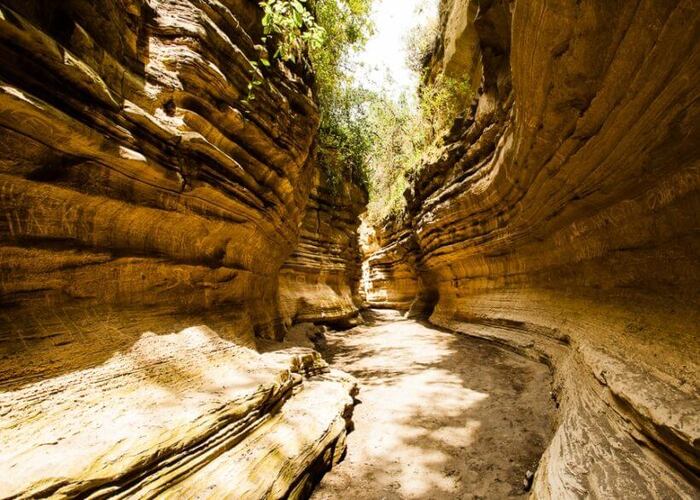
The impressive gorges, canyons and geothermal springs bear witness to geological activity in the past and present. One of the most remarkable formations is Fischer’s Tower, a freestanding rock that majestically rises into the sky and attracts climbers from all over the world.
Although Hells Gate National Park is not as densely populated with wildlife as other Kenyan national parks, it still offers a rich diversity of fauna and flora. Animal species native to the area include zebras, giraffes, eland, baboons and various birds of prey. The park’s spectacular birdlife makes it a birdwatcher’s paradise.
The park is a popular destination for outdoor activities and adventure sports. Hikers and mountain bikers can explore the diverse landscapes and experience the impressive nature first hand. Fischer’s Tower is a popular spot for rock climbing, while camping enthusiasts have the option of staying overnight in the wild surroundings.
Another fascinating attraction in Hells Gate National Park is the Geothermal Spa. Here visitors can relax in natural hot springs and enjoy the healing properties of geothermal water. The spa is an ideal place to unwind after a day of activities in the park.
Meru National Park
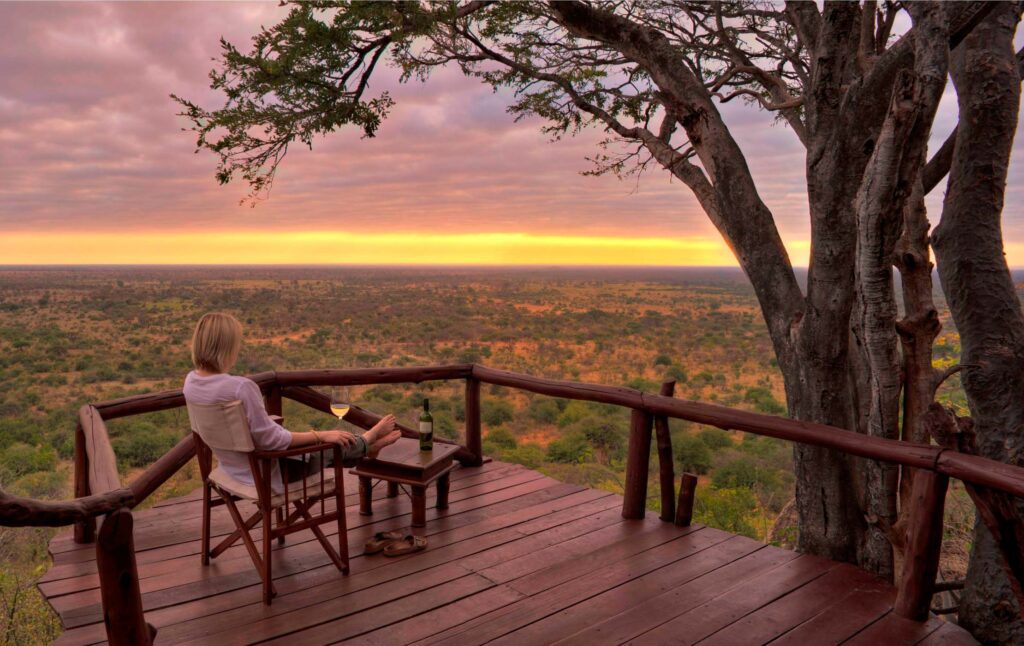
Meru National Park is noted for its fauna and natural beauty. It has many swamps and rivers lined with palms, as well as mountains and woodlands, and it is the setting for Joy Adamson’s book “Born Free”, which was later made into a successful film. The park is home to a large pride of lions, herds of buffalo, and hippos and crocodiles that live in the rivers.At Meru, you will find excellent views of snow-capped Mount Kenya and the park’s beautiful landscape is a camper’s paradise. The roads are suitable for vehicles and there are many rocky outcrops that provide great lookout points for the abundant Kenyan animals.
Meru National Park incorporates Bisanadi, Kora, Rahole and Mwingi National Reserves. It is situated right on the equator at an altitude of between 1000-3400 feet (304-1036meters) and covers 870km². The park was established in 1968.
Meru National Park is 348km from Nairobi, the capital of Kenya. Its natural scenery is diverse, from the wide-open plains with many rivers, to the woodlands on the slopes of the Nyambene mountain range, to the northeast of Mount Kenya. George and Joy Adamson pioneered research in the park by associating with cheetahs and lions, particularly “Elsa” the lioness. Joy wrote a book that was made into the famous film “Born Free”, which, in turn, brought Meru National Park to public attention. In the 1980s, the elephant population suffered greatly due to the activities of illegal ivory poachers.
The Kenya Wildlife Service has since largely eradicated this problem by providing armed security patrols, and elephant numbers are now increasing.Game viewing includes elephants, hippos, lions, leopards and cheetahs. There are also some rare antelope, including the Lesser Kudu, duiker and dik-dik, a tiny African antelope that stands just twelve inches high and is notoriously shy. Meru National Park also has some of Kenya’s largest herds of buffalo, along with hartebeests, giraffes and gazelles.
Samburu National Reserve
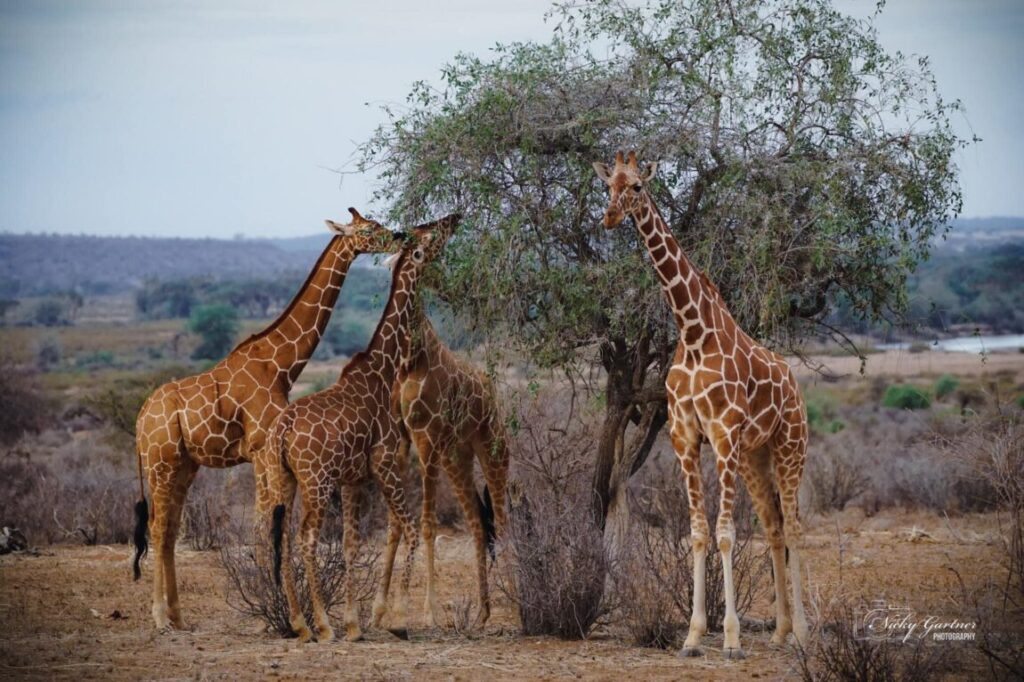
Samburu National Reserve is a rugged and semi-desert park located in Samburu district in the Rift Valley Province of Kenya. The park neighbors the homes of the Samburu tribe of Kenya, a tribe known for their remote culture, and pastoral and nomadic way of life. Due to its remote distance and the fact that it was inaccessible for many years, the park has retained a naturally serene and quiet feeling. Besides the numerous wildlife found in this game reserve, the park is also a bird haven.
Samburu National Reserve is situated within the Rift Valley Province of Kenya. Measuring approximately 104sq. kilometres in size, this unfenced savannah grassland is roughly 350km from Nairobi. It is relatively small in size compared to other Kenyan parks, such as Tsavo or Masai Mara. Samburu national reserve derives its name from the Samburu people of Kenya who have lived in the area for many years. The Uaso Nyiro River cuts through this reserve, drawing a big population of Kenya animals to the park. The river bustles with activity from its huge population of Nile crocodile. The reserve’s topography is mainly open savannah (grassland) with clusters of acacia trees, forest, thorn trees and grassland vegetation.
Samburu National Reserve was one of the two areas in which conservationists George and Joy Adamson raised Elsa the Lioness. Their story was made famous by the bestselling book and award-winning movie “Born Free”. The game reserve is renowned for its rare species of animals, the Samburu Special Five unique to the park, namely: the long-necked gerenuk, Grevy’s zebra, reticulated giraffe and Beisa onyx. The elusive Kenya leopard is often known to visit the park, especially in the evenings. Other Kenyan wildlife present in the park includes cheetahs and lions, as well as elephants, buffalo and hippos. Birdlife is as plentiful as wildlife at Samburu National Reserve, which boasts over 350 different species of birds including vultures, kingfishers, marabous, bateleurs, guinea fowl, Somali ostriches and others.d description for your Article from here.

